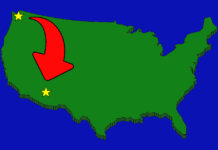
A year after moving to Maricopa in 1938, and having worked hard the previous year to clear land for a farm, Ava Sloan’s youngest son, Harry Zane, was born.
Because of the bad roads in the area and Ava’s very low blood pressure, the doctor recommended that she stay closer to a medical facility the last two weeks of her pregnancy. She went to stay at her mother’s house in Chandler.
“It broke my heart to leave my little family,” she said.
Her 3-year-old Dustin was especially valiant when her husband Oliver brought their children to visit her. “I wish I could stay, but I know I can’t,” he said as he crawled into the back seat of their car.
“I cried my eyes out. I still cry when I think about it,” she said in 1988.
Harry was 10 days old when she joined her family back in Maricopa. “Everyone was down with that terrible flu,” she said. “We had no help. Oliver could hardly get up to help.”
For several days the family and one of their farm helpers lingered with the flu. Fresh from her pregnancy, Ava had to nurse everyone. She and the baby were the only ones not to sicken.
The country was beginning its climb out of the Great Depression. Many families in the area struggled at low paying jobs, if they had one.
Pinal County was a center for farm jobs at the time. Labor was cheap and transient. Many refugees from the Dust Bowl were still working seasonally in the cotton fields of the area and moving as work became available.
Dorothea Lange, a prolific Americanphotographer, worked for the Farm Security Administration and documented the struggle of the farm worker in Pinal County. Her impactful photographs put faces to the devastating effects of the Great Depression.
The resourceful Sloans managed to make a living, however frugally, during this time.
One day a woman from the community came to visit Ava and baby Harry. “She had seven kids and was crippled,” Ava said. “As a gift she brought me a sheet blanket. She told me I could cut it into four pieces for baby blankets.”
“I appreciated that gift so much as I knew how much she had sacrificed to get it.”
The Sloans planted alfalfa and maize, but no cotton as many of the other farms in Pinal County were planting. “No more cotton,” said Oliver. “If you stay with cotton, it will break you.”
The Sloans also bought cattle and fed them on the desert. “It rained a lot in those days,” said Ava. “The cattle got fat. The desert doesn’t look like it did then.”
The water table was high enough for the roots of mesquite trees to reach the vast aquifer below the surface. Huge stands of mesquites covered areas close to mostly perennial Gila River and seasonal washes like the Santa Cruz and Santa Rosa.
According to Sloan, there were millions of quail in the area and no season on them. “At least for those of us who live here,” she added.
At the time, according to Sloan, there was only one farm close to their place, which was off of Porter Road and the present day Maricopa-Casa Grande Highway. It was on the south side of the railroad tracks and owned by a Mr. Youtsie.
“He sold it to the Steerman boys,” she said.
The war in Europe began to accelerate about the same time that people in the area began to recognize that Maricopa was a great place to farm.
“Everyone who came to Maricopa [to farm] went broke until they started using fertilizer and insecticide,” Sloan said. “Those that hung on prospered.”
For Maricopa, it was the beginning of a boom in agriculture.

![‘Flying Bucket Fire’ doubles size, causes $200K in damage Tucson's Northwest Fire District crew members assist in firefighting efforts on the "Flying Bucket Fire" approximately 15 miles southwest of Maricopa on May 8, 2024. [Northwest Fire District]](https://www.inmaricopa.com/wp-content/uploads/2024/05/northwest-fire-district-050824-flying-bucket-fire-01-218x150.jpg)
![GAME OVER: The city government tried to get into gaming. It failed Maricopa Esports [Victor Moreno]](https://www.inmaricopa.com/wp-content/uploads/2024/05/263342f5-13e7-4668-838c-f574392086fb-218x150.jpg)



![Rizz party organizers say city ‘lying’ One of several flyers for a "TikTok rizz party" is taped to a door in the Maricopa Business Center along Honeycutt Road on April 23, 2024. [Monica D. Spencer]](https://www.inmaricopa.com/wp-content/uploads/2024/04/spencer-042324-tiktok-rizz-party-flyer-web-218x150.jpg)
![Province writer opens the athlete’s mind in new book Tom Schuman, a Province resident, poses with a copy of his new book, "My Wide World of Sports," outside his home on May 2, 2024. [Monica D. Spencer]](https://www.inmaricopa.com/wp-content/uploads/2024/05/spencer-050224-tom-schuman-sports-book-web-01-218x150.jpg)







![JWP to see more restrictions Monday John Wayne Parkway [Brian Petersheim Jr.]](https://www.inmaricopa.com/wp-content/uploads/2023/03/991A6929-100x70.jpg)

![Traffic change to reduce backup at Villages intersection The intersection at Butterfield Parkway and West Edison Road on May 10, 2024. [Brian Petersheim Jr.]](https://www.inmaricopa.com/wp-content/uploads/2024/05/PJ_5644-100x70.jpg)